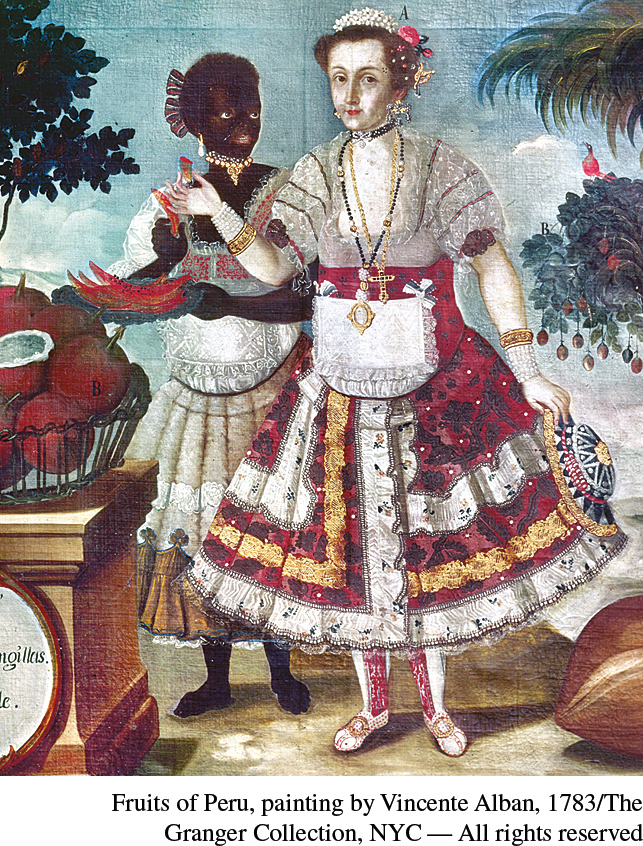ZOOMING IN: Úrsula de Jesús, an Afro-Peruvian Slave and Christian Visionary

Úrsula de Jesús was born in the prosperous Spanish colonial city of Lima, Peru, in 1606, the daughter of a slave mother. Thus she entered life at the lowest rung of Spanish colonial society. But among enslaved people, Úrsula was fortunate. Her mother’s owner was a wealthy aristocratic woman, and at age eight Úrsula was sent to live in the home of another elite woman with a reputation for piety and religious visions. Five years later, Úrsula accompanied a third woman into the Convent of Santa Clara, where she spent the rest of her life. There Úrsula found a place for herself in the world of colonial Peru and Latin American Christianity—
For the next quarter of a century, Úrsula was one of more than a hundred slaves in the convent, where she attended to the personal needs of her mistress and participated in communal labor—
The year 1642 marked a dramatic turning point in Úrsula’s life, when she almost fell into a deep well. Crediting her deliverance from certain death to the Virgin of Carmen, Úrsula turned decisively away from her earlier vain and self-
Úrsula’s new religious fervor incurred the displeasure of her mistress, who felt neglected by her slave. By 1645, a deeply unhappy Úrsula determined to leave the convent and find a new owner. Then one of the nuns, hoping to retain her pious services, purchased Úrsula’s freedom. Nonetheless, Úrsula chose to stay in the convent as a doñada. Doing so represented a modest elevation in her social status, an opportunity to pursue her spiritual life with fewer restrictions, and a measure of social and economic security.
Still, she continued to perform the same exhausting tasks she had as a slave and complained frequently about them. “I was up to my ears with cooking and other things,” she confided to her diary, “desiring only to be in the mountains where there are no people.” Even as she struggled with the restrictions of her position in the convent, Úrsula enhanced her reputation as a “servant of God,” a woman of extraordinary devotion and humility, and as a visionary and a mystic.
In her diary, Úrsula recounted numerous direct encounters with God, Jesus, Mary, and with dead souls seeking her intervention to shorten their time in the purifying fires of purgatory. These visions frequently reflected the tensions of class, race, and position within the convent and in the larger society. Several priests, suffering in purgatory for their sexual sins, luxurious living, and mistreatment of slaves, appealed to Úrsula. So too did nuns who had been lax in their spiritual practices or placed their business interests above their religious duties. Úrsula had a special concern for the female slaves and servants who asked for her intercession. One feared becoming an “orphan” in purgatory with no one to remember her. Another confessed to a lesbian love affair with a nun. Although Úrsula once questioned “whether black women went to heaven,” it was later revealed to her as an abode of “great harmony,” but not of social equality, for “everyone had their place … in accordance with their standing and the obligations of their class.” By the end of her life, however, Úrsula was able to affirm the spiritual equality of all. “In memory, understanding, and will,” she declared, “they [blacks and whites] are all one.”
When Úrsula died in 1666, a prominent nun confirmed that she had entered Heaven directly, with no intervening time in purgatory. Her funeral was attended by many high officials of both state and church, and she was buried beneath the chapel of the convent she had served.
Question: To what extent did Úrsula shape her own life, and in what way was it shaped by larger historical forces?